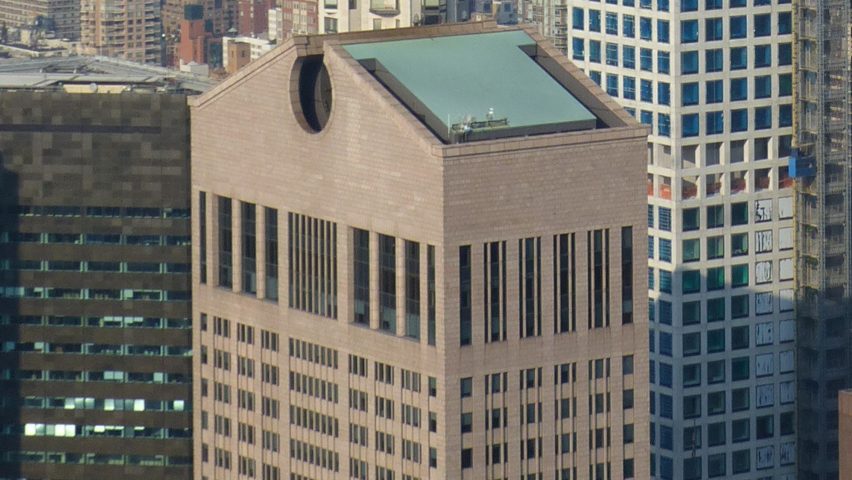The process to bestow landmark status on Philip Johnson's postmodern Midtown Manhattan skyscraper is now underway, a move that could stop Snøhetta's planned renovation of the building from going ahead.
New York's Landmarks Preservation Commission (LPC) voted unanimously today to set a date for the public hearing to preserve the tower at 550 Madison, commonly known as the AT&T Building.
The move, called calendaring, marks the first step in the city's preservation process, which would protect the exterior of the 34-storey masonry skyscraper.
If granted landmark status, Oslo and New York architecture firm Snøhetta's controversial plans to replace part of its base with glass will need to be revised.
The hearing is expected to take place at the start of next year, after which the commission will vote on whether to designate the building as a landmark or not.
Despite the process ahead, campaigners are already celebrating today's announcement as a win against Snøhetta's proposed overhaul. Filmmaker Nathan Eddy, who organised a petition and protest against the plans earlier this month, said the atmosphere at the meeting was "electric".
"You could feel the board's enthralled reaction to the photographs shown and words spoken about the building's importance, not only to architecture but to the city of New York," he told Dezeen. "Their vote was unanimous."
"Make no mistake, they are going to landmark this building. We have won," Eddy added.
Snøhetta refused to comment but a spokesperson for 550 Madison development partner Chelsfield America said that it welcomed the move by the LPC.
"We support the calendaring decision by the New York City Landmarks Preservation Commission to protect the special architectural aspects of 550 Madison Avenue, which we are as committed to as ever following our conversations with community stakeholders," Chelsfield America managing director David Laurie told Dezeen.
Laurie also addressed the criticism that the renovation project has received but added that changes were still necessary in order to develop the surrounding area, as well as "breathe new life into the property that has been vacant for the past two years".
"We recognise that the building has broad appeal and is at various levels an important part of architectural heritage, so we value a constructive dialogue as we develop the plans further," he said.
"550 Madison plays an important role in reaching the goals of the Midtown East rezoning. To achieve that, the building needs upgrades that will enable us to bring more than 3,000 jobs to the area, generate economic activity, and dramatically improve the adjacent public space."
It is less than a month since Snøhetta revealed its renovation plans for the postmodern skyscraper, triggering an outcry from the architecture industry.
Among those that attended Eddy's protest on 3 November 2017 were New York architect Robert A M Stern, while British architect Norman Foster took to Instagram to back the campaign. Architecture and design critics including Olly Wainwright, Alice Rawsthorn, Alan G Brake and Alexandra Lange also all publicly spoke out against the renovation.
All expressed the need to conserve the skyscraper – the first to built in the postmodern architecture style, which emerged in the late 1970s as an ideological reaction against the utopian ideals of modernism.
Johnson and his partner John Burgee completed the 34-storey tower in 1984 for American communications giant AT&T. The building is famed for its ornamental flourishes like the "Chippendale" roof line, and brass and marble finishes inside.
Postmodernism is a controversial style that has often divided opinion, particularly recently, as many examples have been threatened with demolition.
Foster told Dezeen that he didn't particularly like it, describing it as "cartoonish". But he argued that some of the buildings like AT&T are worth saving.
Another example of a building from the style that currently under threat in the US is Helmut Jahn's James R Thompson Center in Chicago. Eddy has also protested the demolition of by creating a movie about the government building.
Image by Citizen 59, courtesy of Wikipedia.

